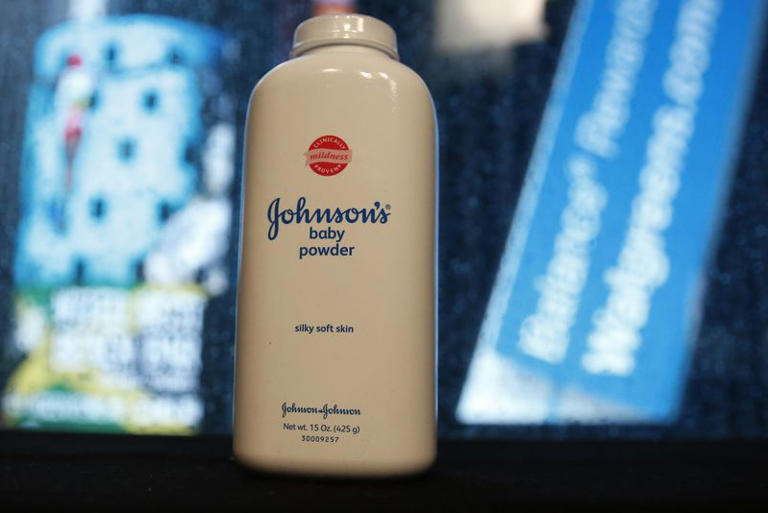Johnson & Johnson (J&J) has reached a pivotal moment in its ongoing legal battle involving its baby powder and other talc products, having cleared a significant hurdle for its proposed $6.5 billion settlement. According to a Bloomberg report, the company has garnered support from more than 75% of claimants for the settlement, a key threshold set for advancing its third attempt to resolve the extensive litigation through bankruptcy proceedings.
Overview of the Settlement and Legal Context
J&J is facing lawsuits from around 61,000 claimants who allege that the company’s talc products, including its iconic baby powder, were contaminated with asbestos and caused ovarian cancer and other cancers. Despite J&J’s denials of these allegations, asserting that their products are safe and free from harmful contaminants, the company has proposed a $6.5 billion settlement to resolve these claims. This settlement aims to provide financial compensation to the claimants and to resolve the litigation comprehensively.
To proceed with this settlement, J&J has employed a “Texas two-step” bankruptcy maneuver. This legal strategy involves transferring the talc-related liabilities to a newly established subsidiary, which then files for Chapter 11 bankruptcy protection. By doing so, J&J seeks to consolidate all claims into a single settlement process under bankruptcy court supervision. The objective is to compel all plaintiffs to accept the settlement, thereby avoiding the need for J&J itself to file for bankruptcy. This maneuver is designed to resolve all outstanding claims in one comprehensive settlement, preventing future lawsuits and potential multibillion-dollar verdicts that could arise from unresolved claims.
Details of the Voting Process and Opposition
The company set a 75% vote threshold for claimants to approve the settlement, which aligns with a provision in U.S. bankruptcy law. This requirement ensures that a significant majority of claimants support the settlement before the bankruptcy court can impose it on all plaintiffs. According to Bloomberg, J&J has surpassed this threshold, although the final vote tally is still being verified.
The voting process and settlement strategy have faced significant criticism and legal opposition. Plaintiffs’ attorneys, including Andy Birchfield, have labeled the process as a “fake bankruptcy election,” arguing that the maneuver lacks genuine legal standing and will not withstand judicial scrutiny. Birchfield and other critics anticipate that any vote count announced will be contested in court, with hopes of allowing juries to adjudicate the merits of J&J’s conduct rather than accepting a preemptive settlement.
Differences from Previous Attempts and Legal Challenges
J&J’s third attempt at utilizing bankruptcy to settle the litigation is distinct from its earlier efforts. The current proposal focuses exclusively on claims related to ovarian and other gynecological cancers, building on previous settlements that addressed mesothelioma claims, a rare cancer linked to asbestos exposure. This refinement in focus represents a strategic shift following earlier setbacks.
J&J’s previous bankruptcy attempts were rejected by courts primarily because the subsidiary involved was deemed not to be in “financial distress,” a requirement for Chapter 11 bankruptcy relief. The company now faces similar arguments in its current attempt, which must demonstrate that the subsidiary meets the criteria for financial distress and that the settlement is fair and equitable for all claimants.
Legal and Legislative Implications
J&J’s strategy also intersects with broader legal and legislative developments. A recent Supreme Court ruling in the Purdue Pharma bankruptcy case has narrowed the ability of courts to halt lawsuits against non-bankrupt entities without the plaintiffs’ consent. J&J argues that this ruling does not affect its settlement proposal because U.S. bankruptcy law provides specific protections for asbestos defendants. However, some legal experts question whether J&J qualifies for these protections, as they were intended to benefit insurers with indirect asbestos liability rather than direct defendants.
In addition to these legal challenges, there is potential for new legislation that could limit companies’ ability to use bankruptcy to shield themselves from lawsuits by establishing shell companies. Proposed laws aim to restrict such maneuvers, potentially impacting J&J’s settlement strategy and similar bankruptcy tactics employed by other companies.
Conclusion
As J&J moves forward with its settlement proposal, the company has achieved a significant milestone by securing the necessary claimant support. However, it continues to face substantial legal obstacles. The company’s use of the bankruptcy process to resolve its talc-related litigation remains contentious and subject to ongoing legal challenges and potential legislative changes. The outcome of these efforts will be closely watched, as it could set important precedents for how large-scale corporate settlements and bankruptcy strategies are handled in the future.
